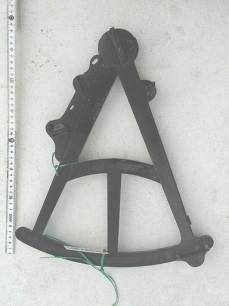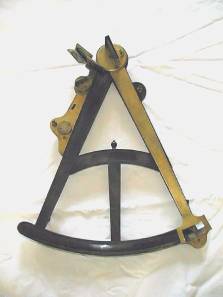|
The Spanish ship Salvador sank on August 31, 1812 in the Maldonado Bay. This fifty-metre merchant ship was used for troops transport originally destined to Peru. After the revolution against colonial power, in the Orient Band of the River Plate (present Uruguay), it was deviated to attack the Montevideo port captured by the patriots. On board embark 520 soldiers of the Albuhera battalion, along with other crew and passengers. Taken by surprise by a strong SW wind, locally named Pampero, she ran aground over sand banks. The ship broke in two parts and only 130 people survived. The Maldonado Bay is in front of Punta del Este City, 250 km outside Montevideo City. It is a narrow and shallow bay, a except the presence of Gorriti island, the bay is open to the strong SW winds that blows towards the coast. During 1997 the area was prospected by local professional divers and archaeologist with technical support of MARE (Maritime Archaeological Research) to the Oxford University directed by Dr. Mensun Bound, doing the first maps of the site. Due to the way that wreck was, the ship was divided in two sectors. One towards to SE (650 m²) with an predominance of the pieces of the ship, specially the stern. The other area towards NW to 600 m², had many artefacts – chinaware, bottles, wine glass, silver coins, medical instruments and several military artefacts such as bronze cannons, bronze balls cannon, swords, guns, and other objects of woods and leather. Among these instruments, we recovered three optical instruments to navigation: one sextant and two octants. Stellar navigationIn ancient times the term quadrant was used for an instrument to determine the altitude of the stars on top of the horizon. A quadrant was a division of the Nautical Rose or Winds Rose. The sextant was used since 16th century, but the marine version was developed in 1757 by Captain John Campbell. The name sextant refers to a sixth of a circumference, that is 60°. Therefore the sextant can measure angles to 120°. The octant operates in a similar way but measures smaller angles. The instruments were recovered on 9 meters depth, covered with sediments. An octant was built over an ebony wood frame to 3.80 cm in height and 33 cm in width. It has bronze pieces and an ivory scale. One has the engraving “Spencer, Pronning & Rust, London“ and on the other octant it reads “James & Wilson (B&R)”. We found similar instruments (octants) in the National Maritime Museum in Greenwich, England, and in the collections of Museo Naval in Madrid, Spain. ConservationHow were the finds preserved? Immediately after recovery from the ocean (Fig 1), the instruments were submerged in de-ionized water with a borax solution. During two years the pH concentration was controlled. Next to the desalinised protocol, the instruments were submerged in ethanol to 30% progressive to 100%. The problem with these combined artefacts was dismantling the instruments while maintaining the original screws. The ebony frame was submerged in polyethylene glycol (PEG 400) during two months. The bronze pieces were processed in electrolysis and no abrasive brush. Finally it was all mounted and covered with polyurethane film (Fig 2).
by Atilio Nasti Related texts
BibliographyHamilton, D. 1997 Basic Methods of Conserving Underwater Archaeological Materials Culturals. Nautical Archaeological Program. Department of Anthropology Texas A&M University. Green, J. 1990 Maritime Archaeology, Academic Press. Nasti, A. 1999 Proyecto de Rescate de restos humanos del naufragio del Navío Salvador. -------------. 2000 Underwater Shipwreck Technology. Underwater Intervention 2001. Tampa FL. Perason, C. 1987 Conservation of Marine Archaeological Objects. Butterworths, London |


 Back to Nordic Underwater Archaeology
Back to Nordic Underwater Archaeology